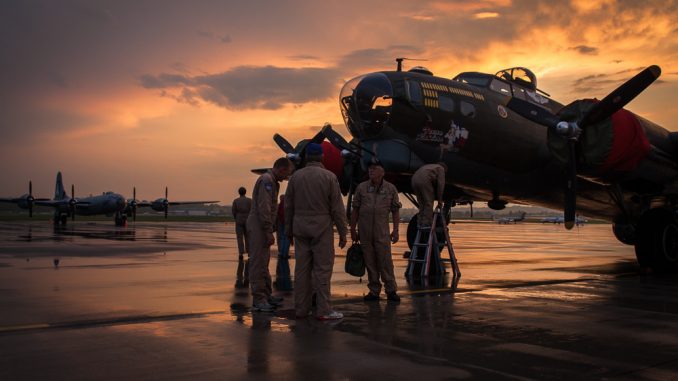
The Commemorative Air Force Gulf Coast Wing’s Flying Fortress, the iconic Texas Raiders, has been a fixture on the U.S. air show circuit since 1967. Originally built as B-17G 44-83872, the aircraft never saw combat, but it did fly airborne early warning operations with the U.S. Navy as PB-1W Bu.77235 for a decade following WWII. The PB-1W was designed to give the U.S.Navy a long-distance radar platform to detect the approach of enemy aircraft from a far greater distance than a seaborne radar ever could. Essentially, the PB-1W was the very first iteration of the modern day AWACs aircraft, a key player on every modern military battlefield.
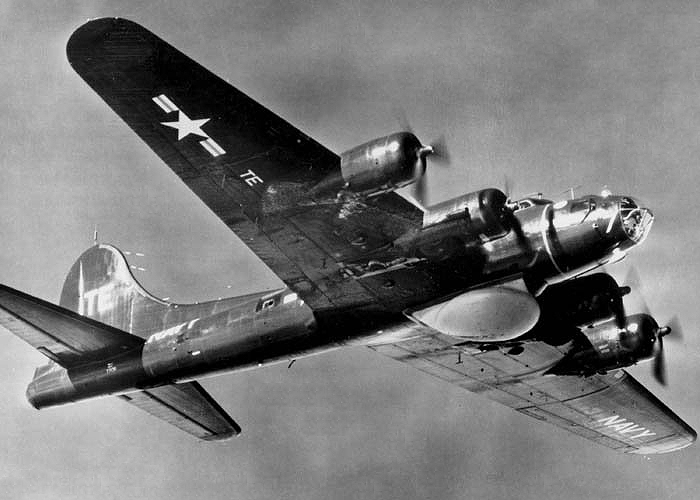
But Texas Raiders’ military history is not the focus of this article. This is the story of how Texas Raiders has changed over the past six decades of warbird flying. The author, Kevin Michels, is a present member of her flight crew, and the CAF Gulf Coast Wing’s historian. We hope you will enjoy the story!
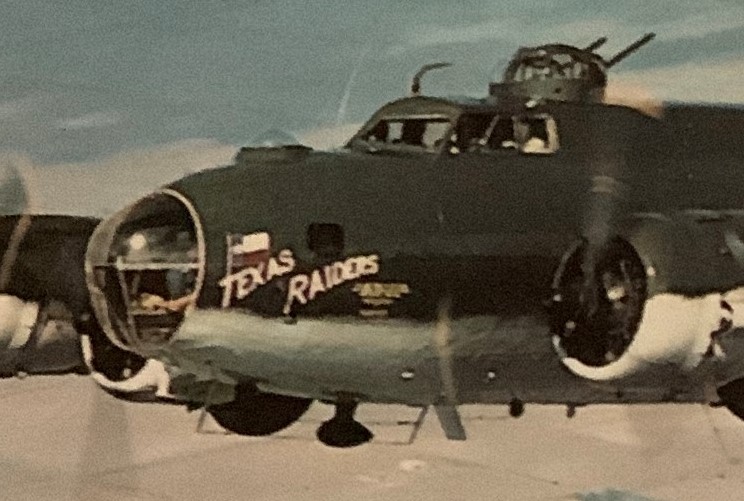
B-17 Texas Raider’s Nose Art Evolution – Setting the Record Straight
by Kevin Michels
All of us at the Gulf Coast Wing (GCW) are very proud of our B-17 Flying Fortress, Texas Raiders (TR). Her distinctive nose art separates her not only from other B-17’s, but from all other aircraft too. Whereas most CAF aircraft with nose art have pretty much carried the same or similar artwork during their entire careers with the organization, Texas Raiders is a notable exception. In fact, TR has worn eight-and-a-half different versions of her famous nose art since she began her CAF career in 1967. What’s that… a half, you say? Well, maybe it’s eight, and maybe it’s nine. Stick with me and see how you count it.
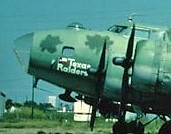 The CAF’s B-17, registered N7227C, didn’t even have a name when she arrived with the organization. B-17 co-pilot and GCW Executive Officer Eddie Burke is officially credited with naming the aircraft Texas Raiders in 1973. The nose art didn’t come until the following year though. It consisted of simple text and a small Texas flag. Regardless of its simplicity, this nose art remained unchanged for as long as the aircraft maintained her 305th Bomb Group markings. Note in the image (left) that each side of the nose has only a single small window and no cheek gun ports.
The CAF’s B-17, registered N7227C, didn’t even have a name when she arrived with the organization. B-17 co-pilot and GCW Executive Officer Eddie Burke is officially credited with naming the aircraft Texas Raiders in 1973. The nose art didn’t come until the following year though. It consisted of simple text and a small Texas flag. Regardless of its simplicity, this nose art remained unchanged for as long as the aircraft maintained her 305th Bomb Group markings. Note in the image (left) that each side of the nose has only a single small window and no cheek gun ports.
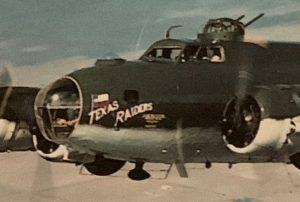 Sometime in August 1977, TR received an entirely new 381st BG paint scheme. Photo evidence from this time indicates that the aircraft may have flown the rest of the 1977 season without nose art. What is now referred to as the “Raiders of the Lost Ark” nose art first appeared in 1978 . Oddly enough, TR received this artwork three-and-a-half years before the famous Harrison Ford movie about the swashbuckling archeologist came out. Ironically though, this nose art disappeared a year before the movie release in June 1981, so they never coexisted; a lost marketing opportunity!
Sometime in August 1977, TR received an entirely new 381st BG paint scheme. Photo evidence from this time indicates that the aircraft may have flown the rest of the 1977 season without nose art. What is now referred to as the “Raiders of the Lost Ark” nose art first appeared in 1978 . Oddly enough, TR received this artwork three-and-a-half years before the famous Harrison Ford movie about the swashbuckling archeologist came out. Ironically though, this nose art disappeared a year before the movie release in June 1981, so they never coexisted; a lost marketing opportunity!
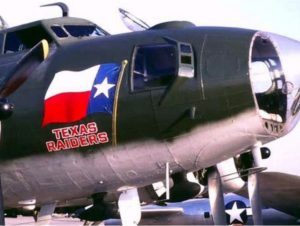 In 1980, TR received cheek gun emplacement windows, one of the many updates on her long journey returning to B-17G configuration. The photo (left) shows the installation close to completion; is comes from the May/June 1980 CAF Dispatch newsletter. With her old nose art partially obscured by the restoration update, she received some new artwork, the short-lived “Large Flag” design. Of special note, at this time, the left side of TR’s nose only has one small window next to its cheek gun emplacement, while the right side has no small windows at all.
In 1980, TR received cheek gun emplacement windows, one of the many updates on her long journey returning to B-17G configuration. The photo (left) shows the installation close to completion; is comes from the May/June 1980 CAF Dispatch newsletter. With her old nose art partially obscured by the restoration update, she received some new artwork, the short-lived “Large Flag” design. Of special note, at this time, the left side of TR’s nose only has one small window next to its cheek gun emplacement, while the right side has no small windows at all.
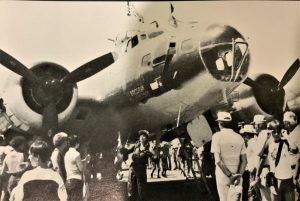 Late in 1980, TR received further modifications installing both small windows to the right side of her nose, and an additional small window on the left, thus completing her nose window reconfiguration. The photo (left) is from the May/June 1981 CAF Dispatch. Since this upgrade obliterated the nose art for a second year in a row, the restoration team painted on another iteration, essentially just a smaller flag graphic, as the text appears unaltered in appearance and location.
Late in 1980, TR received further modifications installing both small windows to the right side of her nose, and an additional small window on the left, thus completing her nose window reconfiguration. The photo (left) is from the May/June 1981 CAF Dispatch. Since this upgrade obliterated the nose art for a second year in a row, the restoration team painted on another iteration, essentially just a smaller flag graphic, as the text appears unaltered in appearance and location.
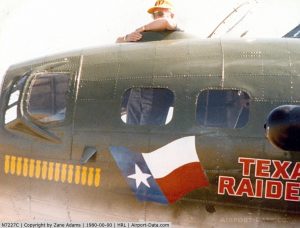 In 1982, two slight changes appeared. This is what I refer to as the ‘Half Version’ of the nose art. The first change is a slight re-imagining of the Texas flag for reasons unknown, and the second marks the inaugural appearance of yellow bomb mission markers. Fifteen is the mission count although the reasons for this number, if there ever were any, are now lost to time. Arguments could be made to count this nose art version as no change, a ninth, or the eight-and-a-half, as I have. You can decide for yourself!
In 1982, two slight changes appeared. This is what I refer to as the ‘Half Version’ of the nose art. The first change is a slight re-imagining of the Texas flag for reasons unknown, and the second marks the inaugural appearance of yellow bomb mission markers. Fifteen is the mission count although the reasons for this number, if there ever were any, are now lost to time. Arguments could be made to count this nose art version as no change, a ninth, or the eight-and-a-half, as I have. You can decide for yourself!
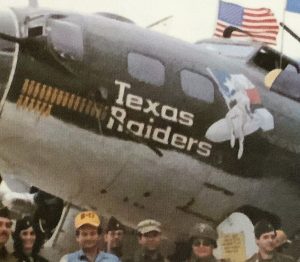 1983 was a landmark year, for this was when the first “Bomb Girl” nose art graced Texas Raiders’ fuselage. The number of bombing mission markers increased to 21; again the reason for this count is unknown. This configuration was short-lived, however, as Texas Raiders began her three-year, nose-to-tail, wingtip-to-wingtip, restoration that fall.
1983 was a landmark year, for this was when the first “Bomb Girl” nose art graced Texas Raiders’ fuselage. The number of bombing mission markers increased to 21; again the reason for this count is unknown. This configuration was short-lived, however, as Texas Raiders began her three-year, nose-to-tail, wingtip-to-wingtip, restoration that fall.
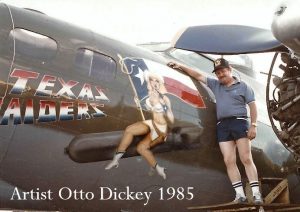 In late 1985, while the all-encompassing restoration project was entering its final stages, artist Otto Dickey applied what is now known as the “Airbrushed Bomb Girl” artwork. No yellow bomb mission markers were initially included. However, in 1988, Col. Everett Gibson and Wing Staff came up with the idea of putting 34 bomb mission markers on the aircraft. This time there was meaning behind the count. Thirty-four was a nod to the 35-mission tour of duty for 8th Air Force bomber crews during WWII, while keeping in mind Texas Raiders’ ongoing “35th mission” of honor, inspiration, and education. The 34 mission markers have remained on the aircraft ever since.
In late 1985, while the all-encompassing restoration project was entering its final stages, artist Otto Dickey applied what is now known as the “Airbrushed Bomb Girl” artwork. No yellow bomb mission markers were initially included. However, in 1988, Col. Everett Gibson and Wing Staff came up with the idea of putting 34 bomb mission markers on the aircraft. This time there was meaning behind the count. Thirty-four was a nod to the 35-mission tour of duty for 8th Air Force bomber crews during WWII, while keeping in mind Texas Raiders’ ongoing “35th mission” of honor, inspiration, and education. The 34 mission markers have remained on the aircraft ever since.
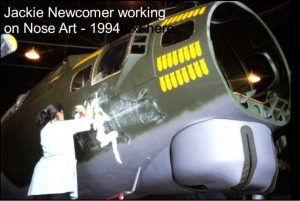 In 1993, just seven years after the restoration project finished, Texas Raiders underwent further maintenance for corrosion abatement, corrosion repair, and a full re-painting. Sadly, one of the casualties to corrosion control was the panel containing Otto Dickey’s nose art. The TR team removed this panel which Jack Amuny then preserved and raffled off at $20 per ticket. This raised over $1,000 for the Wing, and the panel is now a prized family heirloom for the son of longtime GCW member and contributor, Everett Gibson.
In 1993, just seven years after the restoration project finished, Texas Raiders underwent further maintenance for corrosion abatement, corrosion repair, and a full re-painting. Sadly, one of the casualties to corrosion control was the panel containing Otto Dickey’s nose art. The TR team removed this panel which Jack Amuny then preserved and raffled off at $20 per ticket. This raised over $1,000 for the Wing, and the panel is now a prized family heirloom for the son of longtime GCW member and contributor, Everett Gibson.
Prior to the 1994 airshow season, the GCW brought in Jackie Newcomer, a renowned warbird artist, to repaint TR’s nose art using a period-accurate paintbrush technique. Jackie’s previous work is immortalized on many aircraft in the Texas Aviation Hall of Fame, and her freehand-painted nose art on TR was both exceptional and enduring. Having graced TR’s fuselage for 23 years, this nose art served longer than all previous versions combined.
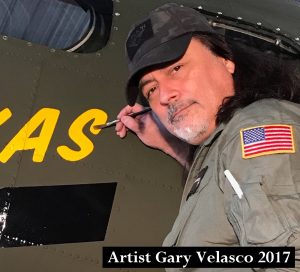 In 2017 Texas Raiders underwent her most recent corrosion abatement, corrosion repair, and full re-paint. As a result, all markings, including nose art, had to be reapplied. This time, Wing Staff decided to noted warbird artis Gary Velasco to do the job of repainting TR’s nose art. Velasco is a well-known Vargas-like professional artist with a long resume of warbird nose art to his credit, including many CAF aircraft. The results were stunning and we expect TR to wear this nose art for the foreseeable future.
In 2017 Texas Raiders underwent her most recent corrosion abatement, corrosion repair, and full re-paint. As a result, all markings, including nose art, had to be reapplied. This time, Wing Staff decided to noted warbird artis Gary Velasco to do the job of repainting TR’s nose art. Velasco is a well-known Vargas-like professional artist with a long resume of warbird nose art to his credit, including many CAF aircraft. The results were stunning and we expect TR to wear this nose art for the foreseeable future.
See below for a visual quick-reference of TR’s Nose art History:
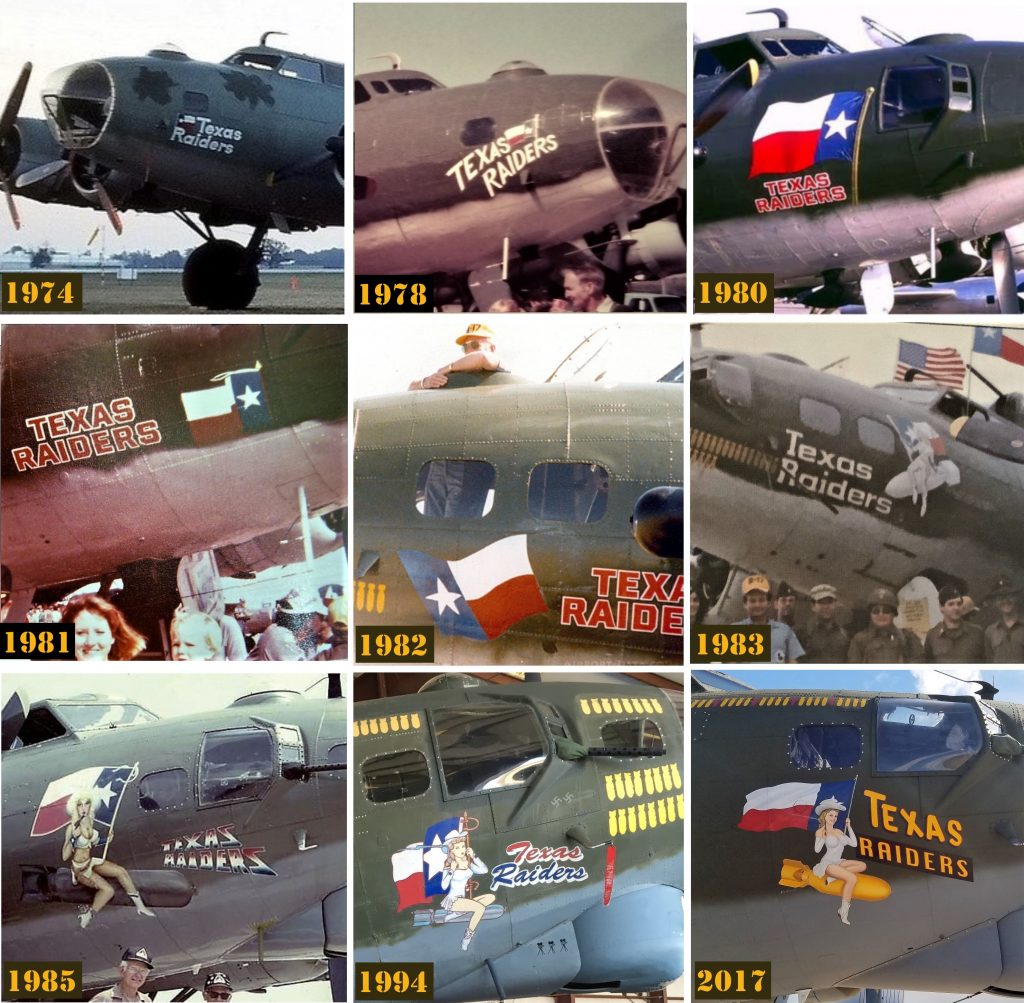


1 Trackback / Pingback
Graphic Design, Branding and Aviation Art